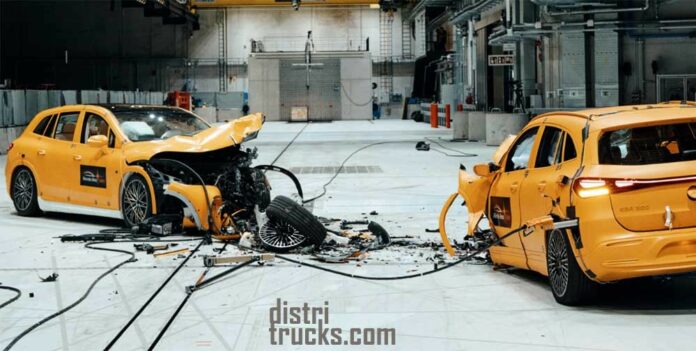With the world’s first crash test involving two electric vehicles, Mercedes-Benz is going above and beyond the legal requirements. In accordance with the specifications, the test vehicle and the trolley collide with an overlap and at a speed of 50 km/h. Mercedes-Benz, however, used two real vehicles, an EQA and an EQS, at a speed of each 56 km/h. For the Mercedes-Benz engineers, it shows that the vehicles were able to effectively absorb the energy of the collision by deforming. As a result, the passenger safety cell of both electric models remained intact and the doors could still be opened. In an emergency, this would make it possible for occupants to exit the vehicle on their own or for first responders and rescue personnel to reach them. The high-voltage system in the EQA and the EQS SUV switched off automatically during the collision.
The EQA and the EQS SUV each carried two adult dummies – a total of three females and one male. Analysis of the up to 150 measuring points per dummy indicate a low risk of serious to fatal injury. This means that the defined crumple zones and advanced restraint systems in both vehicles offer good protection potential for the occupants in a crash of this severity.
Mercedes-Benz has developed a multi-stage high-voltage protection concept for its electric vehicles. The system has eight key elements to ensure the safety of the battery and all components with a voltage above 60 volts. Examples include separate positive and negative wiring and a self-monitoring high-voltage system that automatically switches off in the event of a serious collision.
Since 2016, Mercedes-Benz has been conducting crash tests at the new Group-owned Technology Centre for Vehicle Safety in Sindelfingen. The test centre is one of the largest and most modern of its kind in the world. It has three highly flexible crash lanes leading into a large, support-free area measuring over 8,000 square metres (90 m × 90 m). Its capacity is also impressive: In Sindelfingen alone, Mercedes-Benz conducts up to 900 crash tests and 1,700 sled tests every year.





